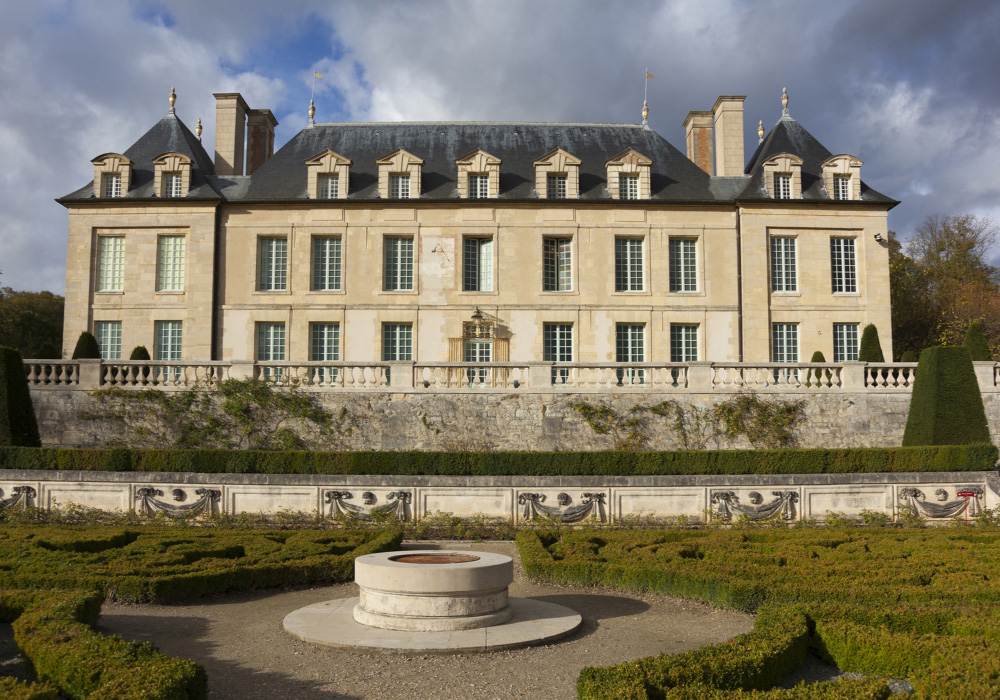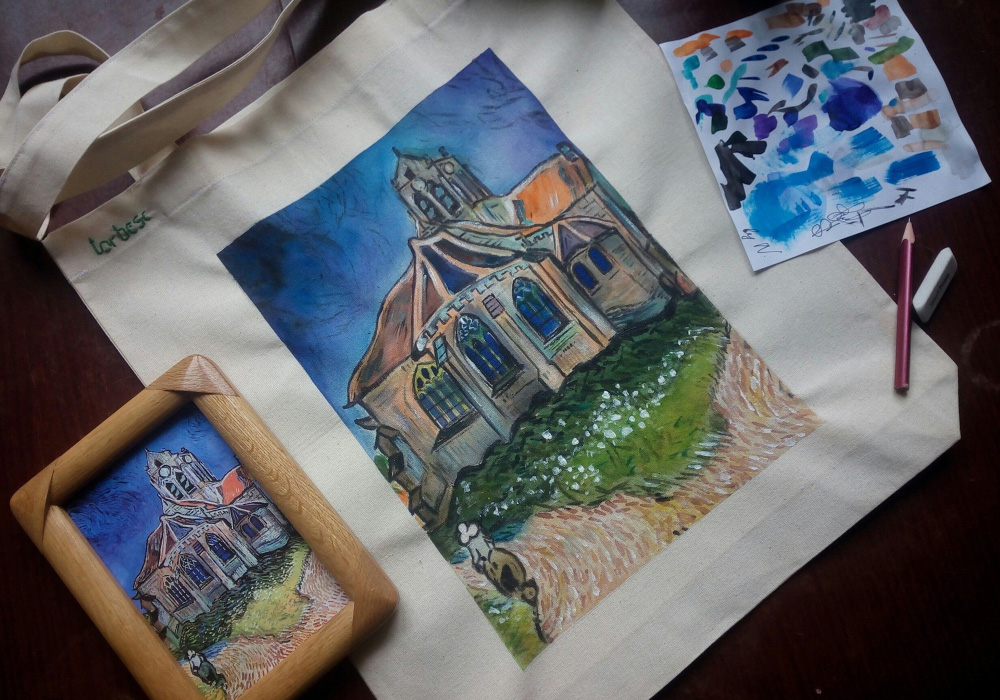A quiet train ride from Paris to Auvers-sur-Oise, followed by a visit to Vincent van Gogh’s grave, offered a rare chance to see the landscapes that shaped his final works. What began as a simple day trip quickly became a meaningful way to understand the places behind his paintings and the final chapter of his life.
Have you ever wondered what it feels like to stand where a great artist once walked? Visiting the tomb of Vincent van Gogh in Auvers-sur-Oise, just outside Paris, offers a grounded look at the world he knew in his final months. The village has a calm presence, and the places he painted still bear traces of the scenes he painted.
As I stepped into this quiet corner of France, the atmosphere felt steady and unhurried. The air itself seemed thick with a lingering presence, a mixture of Van Gogh’s fierce passion, his profound struggles, and his undeniable genius. Let me take you with me to his final resting place.
Journey to Auvers-sur-Oise
The trip from Paris to Auvers-sur-Oise is a short, pleasant escape into art history. In under an hour, the train transports you from the city's heart to the rural vistas that inspired Van Gogh. Arriving in the village, his choice became instantly clear: the gentle light, the expansive fields, and the quiet lanes are a living canvas. Every corner seems to hold the memory of his final, feverishly creative days.
Planning the trip
A bit of planning made my visit straightforward. Auvers-sur-Oise sits about 35 kilometres from Paris, close enough for a relaxed day trip.
Helpful details:
| Item | Details |
|---|---|
| Transport | Train from Gare du Nord, ~35 minutes |
| Tickets | €10–€15 round-trip |
| Best time to visit | April–October |
| Walking distance | 2–4 km around the village |
Scenic route from Paris
The train ride to Auvers-sur-Oise sets a relaxed tone. Watching the landscape shift from urban edges to open countryside creates a natural transition into the village’s slower pace.
Route overview:
- Train: Paris Gare du Nord → Auvers-sur-Oise
- Walk: Train station → Village centre → Van Gogh’s tomb (approximately 20 minutes)
- Bike option: Rentals are available if you prefer to explore the fields and river paths on wheels.
Walking from the station into the village offers views that feel familiar if you’ve spent time with Van Gogh’s paintings: sloping fields, angled rooftops, and changing light.

First impressions of Auvers-sur-Oise
The village feels small, tidy, and welcoming. Its quiet streets and stone houses give the impression of a place that has changed slowly over time. Despite its connection to Van Gogh, Auvers-sur-Oise still feels like a working village rather than a curated historical site.
Village atmosphere
- Quiet lanes ideal for walking
- Friendly locals who greet visitors with ease
- Small galleries and shops referencing the village’s artistic history
Cafés around the town square offer a good place to pause and observe local life.
Nearby historic landmarks

| Landmark | Description | Distance |
|---|---|---|
| Church of Auvers | The iconic subject of one of his most famous paintings (painted by Van Gogh in 1890), its unique architecture is instantly recognizable. | 5 mins |
| Château d’Auvers | A historic castle that now houses an immersive museum on Impressionist art. | 10 mins |
| Van Gogh House (Auberge Ravoux) | The inn where Van Gogh rented a small room and eventually died. It is preserved as a museum. | 8 mins |
These places help build a complete picture of the environment in which Van Gogh lived and worked.
Approaching Van Gogh’s tomb
The cemetery sits on a small rise at the edge of the village. Reaching it from the town centre takes roughly 15–20 minutes on foot.
Finding the cemetery was a simple, signposted walk from the village center. I followed the Rue de Verdun northwards, a peaceful path lined with gardens, until I reached the small, unassuming stone entrance of the Cimetière d’Auvers-sur-Oise. Inside, the cemetery is modest and serene, with neat rows of graves shaded by tall, whispering trees. The paths are easy to navigate, leading visitors directly to the site.
Practical details:
| Feature | Information |
|---|---|
| Hours | 8:00 AM – 6:00 PM |
| Entrance fee | Free |
| Terrain | Walkable with some uneven surfaces |
| Nearby cafés | Located back in the village centre |
At the tomb site
The tomb itself is strikingly simple, a plain stone slab set against the earth. The most poignant detail is that he is buried beside his devoted brother, Theo, who supported him throughout his life. This eternal proximity speaks volumes about their bond. Seeing the small tokens left by admirers—fresh sunflowers, worn-out paintbrushes, handwritten notes—was a moving testament to how his work continues to resonate across time, touching hearts long after his own stopped beating.
 Final resting place of Vincent van Gogh in Auvers-sur-Oise.
Final resting place of Vincent van Gogh in Auvers-sur-Oise.
Key features of the grave:
- Natural stone headstones
- Simple inscriptions with their names and dates
- Low growth of ivy and seasonal flowers
- Occasional small tributes left by visitors
The surrounding cemetery is quiet, shaded by tall trees and bordered by fields that resemble many of the landscapes Van Gogh painted in 1890.
Connecting with Van Gogh’s legacy
Seeing the real locations behind Van Gogh’s late works adds context that museums alone can’t provide. The church, the wheatfields, the sloping roads—they remain recognizable, even 135 years later.

Artistic connections
- Landscape and light: The colours and shapes of the fields echo his paintings.
- Techniques: His characteristic brushwork and colour choices make more sense when viewed alongside the actual scenery.
- Subjects: Several of his Auvers works can be traced to specific spots still accessible today.
Examples of works linked to this area:
| Painting | Year | Linked Location |
|---|---|---|
| Wheatfield with Crows | 1890 | Fields near Auvers |
| The Church at Auvers | 1890 | Village church |
| Portrait of Dr. Gachet | 1890 | Home of his doctor |
Walking through these places provides a clear sense of how closely his surroundings influenced his final paintings.
Local culture and food
A visit that offers a lasting perspective
Visiting Van Gogh’s tomb in Auvers-sur-Oise provides a clear and grounded sense of the places that shaped his final works. The village, the walking paths, the church, and the cemetery all contribute to an understanding of his last months that feels concrete and accessible.
For anyone interested in art history, rural France, or following an artist’s footsteps, Auvers-sur-Oise offers a rewarding and informative visit that stays with you long after the day ends.




Comments powered by CComment